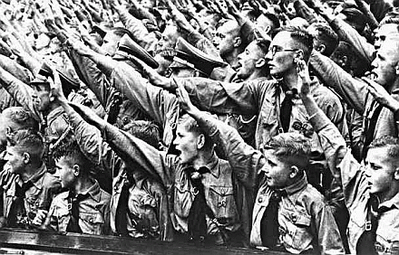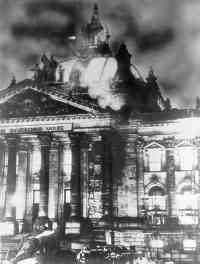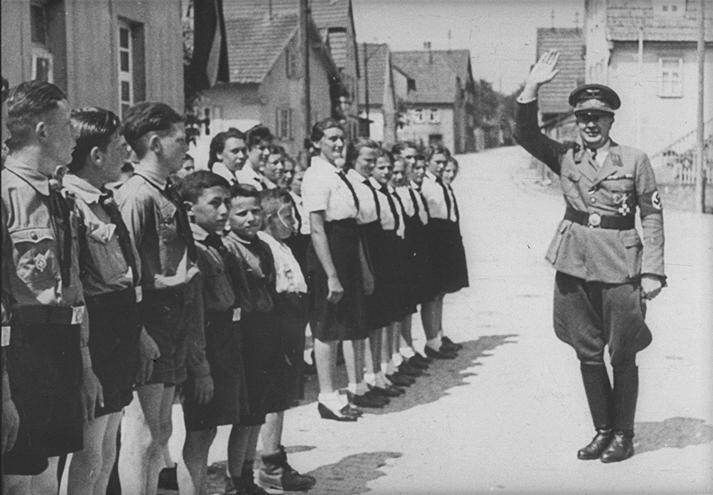Hitler and the Rise of Nazism
The Great Depression: The Main Ingredient
- Unemployment high
- many angry workers
- Hitler, like Roosevelt provided jobs and helped the economy recover through make work projects
- Fascist's build armies
Brownshirts
- Hitler's henchmen
- Used through the late 20's and early 30's to harass opposition parties unmercifully
- Led by Ernst Rohm
- After Hitler is elected many are appointed auxiliary police
Burning of the Reichstag
- February 1933
- Dutch communist 'convicted of the crime'
- Hitler bullies (w/ help of the Brownshirts)
The Enabling Act
- Agreed to by the Reichstag in 1933 under threats from the brownshirts
- Only 93 Social Democrats voted against it
- Allowed Hitler to pass laws w/o consulting the Reichstag
- Despite the lack of freedom of speech or press Hitler only won 288 seats, barely a majority
- By July 1933 all other political parties are outlawed
Steps to power
- 1928 - 12 members of Nazi party elected to Reichstag
- 1930 - 107 seats out of 647
- 1932 - 230 seats out of 647 which made them the largest party
- President Hindenburg refused to give Hitler the Chancellorship
- 1932 (2nd election) Nazis fall to 198 seats
- Hindenburg chooses Hitler as Chancellor as a tool against the Communists
- 1933 Feb. (Reichstag fire election) 288 seats (majority due to imprisonment of Communist members)
- 1933 March Enabling Act
- Forms the Getsapo (secret police)
Night of the Long Knives
- June 30 1934
- Internal challengers were murdered
- Ernst Rohm leader of S.A
- He declared the SS (Shutzstaffel) had conducted the murders proudly and was congratulated by Hindenburg
- Month later Hindenburg dies and an 'electin' was held which voted Hitler in as President (99.5%)
Summary
With the right scenario of a recession in Germany, Hitler was able to rise to power. He also used several other factors like, burning of the Reichstag, the Enabling Act, and the night of the long knives.



